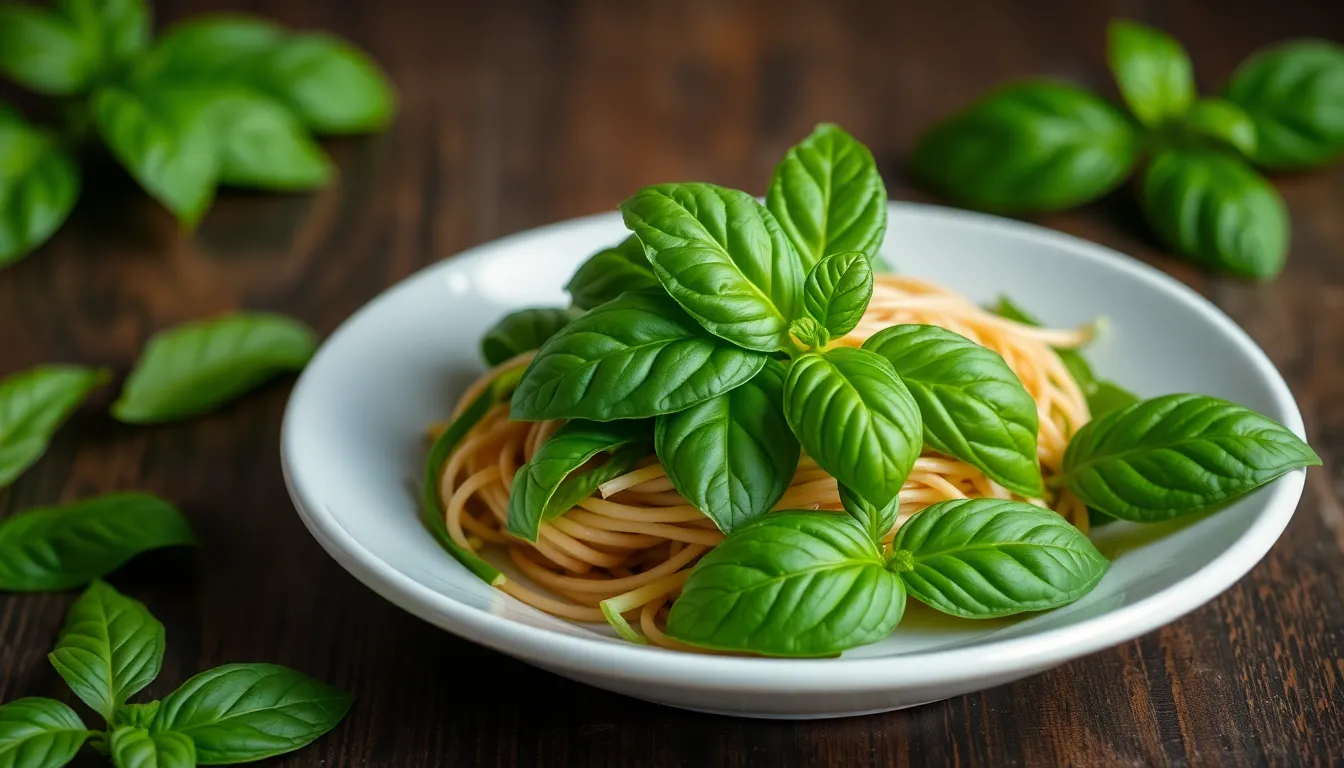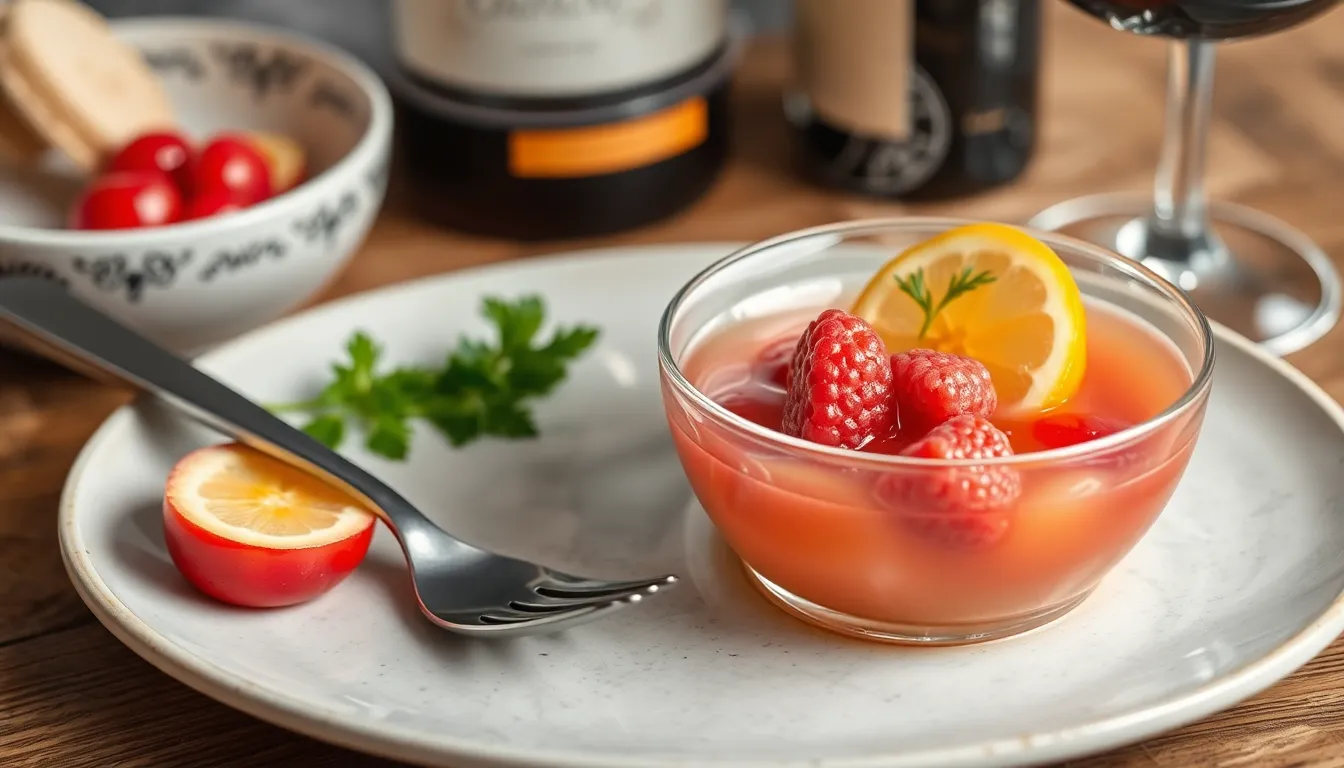body {
font-family: Arial, sans-serif;
line-height: 1.6;
margin: 20px;
padding: 20px;
background-color: #f9f9f9;
}
h1, h2, h3 {
color: #333;
}
table {
width: 100%;
border-collapse: collapse;
margin: 20px 0;
}
th, td {
border: 1px solid #ccc;
padding: 10px;
text-align: left;
}
th {
background-color: #eee;
}
The Herb of the Month: Spotlight on Thai Basil
Introduction
Welcome to the “Herb of the Month” series, where we explore the vibrant world of herbs that bring flavor, aroma, and nutrition to our kitchens. Herbs are the unsung heroes of cooking, transforming simple dishes into culinary masterpieces. This month, we turn our attention to Thai basil, a herb cherished for its unique flavor profile and versatility in various cuisines.
Thai basil (Ocimum basilicum var. thunbergii) stands out with its distinctive taste and aroma. Unlike its Italian counterpart, Thai basil has a sweet, slightly spicy flavor with hints of anise and clove, making it an essential ingredient in many Southeast Asian dishes. Let’s dive deeper into what makes this herb so special!
What is Thai Basil?
Thai basil, also known as “bai horapha” in Thailand, is a variety of basil that boasts striking characteristics that set it apart from other types of basil. Here’s a closer look:
- Appearance: Thai basil features green leaves with a slightly purple hue on the stems. The leaves are elongated and have a sharper point compared to sweet basil.
- Flavor Profile: Thai basil has a complex flavor that combines sweetness with a bit of spiciness, along with a subtle licorice note from the anethole compound. This unique taste makes it a perfect match for both savory and sweet dishes.
Nutritional Benefits
Beyond its culinary applications, Thai basil is rich in essential nutrients and antioxidants. Here are some of the nutritional benefits:
- Rich in vitamins A and K, which are vital for maintaining healthy vision and blood clotting.
- Contains antioxidants such as flavonoids and polyphenols that help combat oxidative stress.
- Offers anti-inflammatory properties, promoting overall health.
Culinary Uses of Thai Basil
Thai basil is a star ingredient in a variety of dishes from Thailand and beyond. Its robust flavor shines in both savory and sweet preparations. Here are some popular dishes that highlight Thai basil:
Popular Dishes Featuring Thai Basil
- Thai Cuisine:
- Pad Krapow: A flavorful stir-fried dish featuring ground meat, chili, and garlic, where Thai basil takes center stage.
- Tom Yum: A hot and sour soup that is both aromatic and invigorating, enriched with fresh Thai basil.
- Other Cuisines:
- Vietnamese Dishes: Thai basil is commonly used in fresh spring rolls and pho, adding a fresh note that complements the broth.
Cooking Tips to Maximize Flavor
To harness the full potential of Thai basil in your cooking, consider the following tips:
- When to Add: Add Thai basil towards the end of cooking to preserve its vibrant flavor and green color.
- Pairing: Thai basil pairs wonderfully with ingredients like chilies, garlic, shrimp, and lime. Experiment with pairing it with coconut milk for a rich, aromatic profile.
Common Dishes Featuring Thai Basil
| Dish Name | Cuisine Type | Key Ingredients | Cooking Method |
|---|---|---|---|
| Pad Krapow | Thai | Ground meat, chili, garlic | Stir-fry |
| Tom Yum Soup | Thai | Shrimp, lemongrass, lime | Soup |
| Vietnamese Spring Rolls | Vietnamese | Rice paper, shrimp, veggies | Fresh rolls |
| Thai Basil Pesto | Fusion | Thai basil, nuts, garlic | Blending |
How to Grow Thai Basil at Home
If you’re inspired to use Thai basil in your cooking, why not grow it yourself? Here are some tips to cultivate this aromatic herb at home:
Growing Conditions
- Sunlight: Thai basil thrives in full sunlight, requiring at least 6 to 8 hours of sunlight per day.
- Soil: Use well-draining soil enriched with organic matter. A pH level between 6.0 to 7.0 is ideal.
- Watering: Water regularly, but avoid overwatering. The soil should be moist but not soggy.
Tips for Planting and Maintaining Thai Basil
Here are some additional tips to ensure a lush, healthy Thai basil plant:
- Start with seeds or seedlings from a reputable source.
- Pinch off the tops of the plants regularly to encourage bushy growth.
- Fertilize once a month with an organic fertilizer.
Harvesting Techniques for Optimal Flavor
Harvesting Thai basil correctly can enhance its flavor:
- Use scissors to snip off leaves and stems, avoiding damage to the plant.
- Harvest in the morning after the dew has dried for the best flavor.
- Regularly harvesting will encourage new growth and enhance the plant’s productivity.
Storing and Preserving Thai Basil
To enjoy the fresh flavor of Thai basil for longer, here are some best practices for storage:
Storage Methods
- Fresh Storage: Store fresh Thai basil in the refrigerator wrapped in a damp paper towel inside a plastic bag to maintain moisture.
- Dried Storage: Dry Thai basil in a cool, dark place and store it in an airtight container for up to six months.
Freezing Methods
Freezing is an excellent way to preserve Thai basil:
- Chop the basil and place it in an ice cube tray filled with olive oil or water, then freeze.
- Once frozen, transfer the basil cubes to a resealable bag for future use in soups or sauces.
Making Thai Basil Oil
Another great preservation method is creating Thai basil oil:
- Blend fresh Thai basil with olive oil until smooth.
- Strain through a fine mesh sieve and store the oil in a glass container in the refrigerator for up to two weeks.
Recipes Featuring Thai Basil
Now that you know all about Thai basil, let’s put it to use in some delicious recipes!
Recipe 1: Pad Krapow (Thai Basil Stir-Fry)
Ingredients:
- 1 lb ground meat (chicken, pork, or beef)
- 4 cloves garlic, minced
- 2-3 Thai bird chilies, chopped
- 1 cup Thai basil leaves
- 2 tbsp soy sauce
- 1 tbsp oyster sauce
- 1 tbsp sugar
- Vegetable oil for cooking
Instructions:
- In a hot wok, add vegetable oil and sauté garlic and chilies until fragrant.
- Add ground meat and stir-fry until cooked through.
- Stir in soy sauce, oyster sauce, and sugar, cooking for an additional minute.
- Remove from heat and fold in the Thai basil leaves, allowing them to wilt.
- Serve hot with steamed rice.
Recipe 2: Thai Basil Pesto
Ingredients:
- 2 cups Thai basil leaves
- 1/2 cup nuts (pine nuts or cashews)
- 2 cloves garlic
- 1/2 cup olive oil
- 1/4 cup grated Parmesan cheese
- Salt and pepper to taste
Instructions:
- In a food processor, combine Thai basil, nuts, and garlic. Pulse until finely chopped.
- Gradually add olive oil while processing until smooth.
- Stir in Parmesan cheese and season with salt and pepper.
- Use the pesto as a sauce for pasta, a spread, or a dressing.
Recipe 3: Tom Yum Soup
Ingredients:
- 8 cups chicken or vegetable broth
- 1 stalk lemongrass, cut into pieces
- 3-4 kaffir lime leaves
- 200g shrimp, peeled and deveined
- 3-4 Thai bird chilies, smashed
- 1 cup mushrooms, sliced
- 1 cup Thai basil leaves
- Juice of 2 limes
- Fish sauce to taste
Instructions:
- Bring the broth to a boil in a pot. Add lemongrass and kaffir lime leaves, simmering for 5 minutes.
- Add shrimp, chilies, and mushrooms, cooking until the shrimp turns pink.
- Remove from heat and stir in lime juice and fish sauce.
- Add Thai basil just before serving. Enjoy hot!
Conclusion
Thai basil is not just an herb; it’s a culinary gem that can elevate your dishes with its unique flavor and aroma. From Thai stir-fries to fresh spring rolls, the possibilities are endless. We encourage you to experiment with Thai basil in your cooking and explore its versatility in various recipes.
Have you used Thai basil in your dishes? We’d love to hear about your experiences and favorite ways to incorporate this vibrant herb into your meals!
Call to Action
If you enjoyed this spotlight on Thai basil, subscribe to our blog for monthly herb features! Share your favorite uses for Thai basil or any recipe suggestions in the comments below.
Additional Resources




